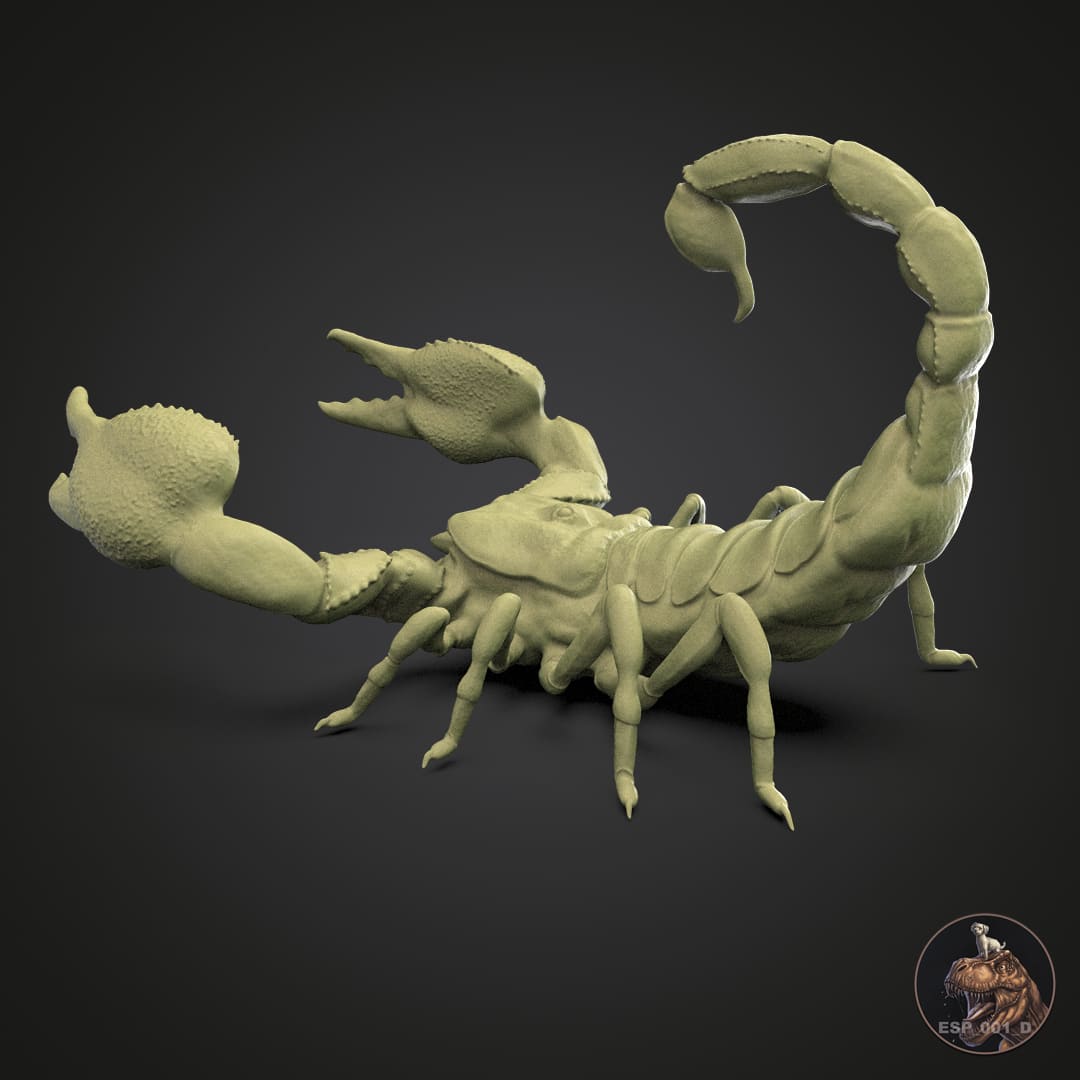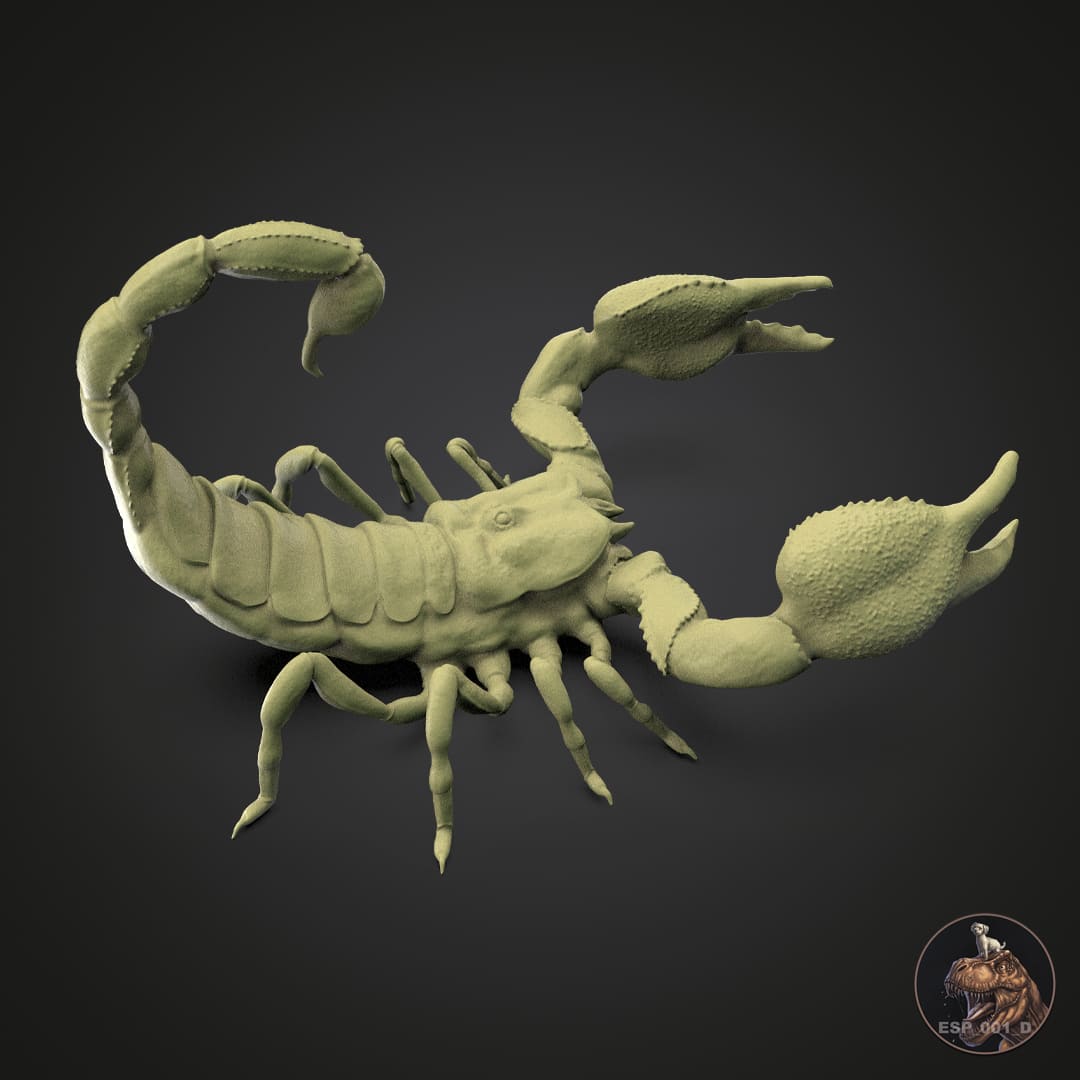


Pandinus imperator (emperor scorpion)
Do you want another scale?
Contact us and we will make it possible!
How will you receive your replica?
In the unprimed and primed variants, you will receive the complete replicas except for the large models, where you will receive an assembly kit.
In the hand-painted variant, the replicas will be delivered complete.
How does the painting service work?
We created a private chat for you where you will have direct communication with our painter , being able to choose your preferred color schemes and follow the hand painting process closely.
Pairs well with

Pandinus imperator (emperor scorpion)
If you have any questions, you are always welcome to contact us. We'll get back to you as soon as possible, within 24 hours on weekdays.
Shipping Information
Visit our shipping policy page to find all the information.
Customer Support
Give us a few details and we’ll offer the best solution. Connect by chat or email.
We are available 24/7.
FAQ’s
Visit our FAQ's page to find answers to common questions.
Contact Us
We'd love to hear from you. We are here to help. Visit our contact page to send us a message.
Product details
The Pandinus imperator has an anatomy that makes it particularly recognizable. Like all scorpions, it has two large pincers on the front of its body, which are its main defense and attack tools. These pincers, or pedipalps, are of considerable size, with a solid and rough appearance. Unlike other smaller, more dangerous scorpion species, the Pandinus imperator tends to rely more on the strength of its pincers than its venom to immobilize its prey. Its venom, while effective, is relatively mild to humans, causing only local pain, swelling, or a mild allergic reaction in most cases.
Its tail, or metasoma, is divided into five segments, ending in a sharp stinger that it uses to inject venom. The tail arches elegantly over its body when it feels threatened or when it is hunting. However, being a scorpion more dependent on the strength of its pincers, it only uses its stinger in specific situations, usually as a last resort or to deal with more difficult prey.
The Pandinus imperator is a nocturnal hunter and feeds primarily on insects, such as crickets and cockroaches, although it may also capture small vertebrates such as lizards or young rodents if it has the opportunity. During the hunt, it uses its powerful pedipalps to hold onto prey, crushing it with its pincers before deciding whether or not to use its venom. Its hunting system is effective, and its senses are highly developed. Although it lacks sharp vision, it has sensory hairs on its body that detect vibrations in the ground, allowing it to sense nearby movements of its prey or predators.
As for its behavior, the Pandinus imperator is a relatively calm species and does not usually show aggression unless it feels directly threatened. It often spends much of the day hidden in burrows or under logs and rocks, as it is an animal that prefers darkness and humidity. At night, it comes out to explore its territory in search of food. In addition, it is a scorpion that can live in groups, which is unusual among many scorpion species, which tend to be more solitary.
The life cycle of the Pandinus imperator is equally interesting. After mating, females carry the babies on their bodies, caring for them during the first few days of life. The babies are born in a soft and vulnerable state, and remain on the mother's back until they shed their skin for the first time, at which time they acquire the strength of their exoskeleton.
In recent years, the Pandinus imperator has gained popularity in the exotic pet trade due to its size, longevity (it can live up to 8 years in captivity) and docile temperament compared to other species. However, its capture and export have been regulated to prevent the decline of its wild populations, which face threats from the destruction of its natural habitat and overexploitation.
Approximate measurements of the Scorpion:
- Complete 1:2 scale
- Length 63 mm
- Height 36 mm
- Width 56 mm
- Snout-tail length 90 mm
- Complete 1:1 scale
- Length 125 mm
- Height 71 mm
- Width 112 mm
- Carapace length 180 mm
Information about aftershocks
Collector's item ; Hyper-realistic replica, highly detailed and with a high degree of scientific precision.
Made to scale, prototyped in resin and with a scenic base in most of the models offered. If you like miniatures, both for collecting and for painting, we offer you a wide variety of scale replicas; All of them related to dinosaurs, extinct prehistoric fauna and current fauna.
So if you love dinosaurs and animals as much as we do, this is your favorite store to collect and paint them :)
We are authorized distributors of all the replicas and figures we offer. We use 3D printers with 8K - 14K resolution, and high-quality resins with additives to improve hardness and flexibility, thus offering replicas of impeccable quality.
Different scales will be used to make the replicas (depending on the size of the species), although we are open to making other suggested scales upon request as long as they fit in our printing trays, for which you will have to contact us via email and request the required size.
Replicas are supplied with the option of airbrush priming in dark grey. If you require another colour, please let us know which one you prefer in the box with special instructions for the seller. Without priming, we do not guarantee that the resin will accept paint.
We also offer the option of choosing a professionally painted replica, which is agreed upon throughout its development with the painter, through a private chat available.
Complete replica (one piece): We supply complete replicas in those models that are small, and models that are medium, large or not very bulky, will have the prerogative of being presented as a complete replica or assembly kit as the case may be.
Complete replicas will be supplied separately from their base.
Replica assembly kit: We supply replicas whose models are large, very large or bulky, only with this option.
The indicated replicas (generally composed of base, head, body and tail) will come prepared for the subsequent assembly that will be required by the client, by sanding, putty, adhesive or technique chosen by the client.
All replicas are thoroughly inspected before shipping and will be carefully packaged to prevent damage during transport.
Information about the models
The poses of the models aim to represent each character in the most scientifically viable way, thus revealing the life and customs of prehistoric and modern fauna.
Each character has its own personality and develops in different life scenarios; birth, adolescence and play, hunting, feeding, fighting, courtship, death and many other scenes from their daily life, always from the creative perspective of their designers.
Handmade
All orders are individually prepared on the cutter for subsequent prototyping, obtaining a resin part that will require post-processing by manual and ultrasonic cleaning, support removal, ultraviolet curing, labeling and packaging.

We are authorized distributors
We offer both our own physical replicas and those that have been modeled by many of the best 3D designers, in order to offer you the greatest possible variety.
Frequently Asked Questions
If you have any questions about products, orders or shipping, please read our FAQ page to learn more.

